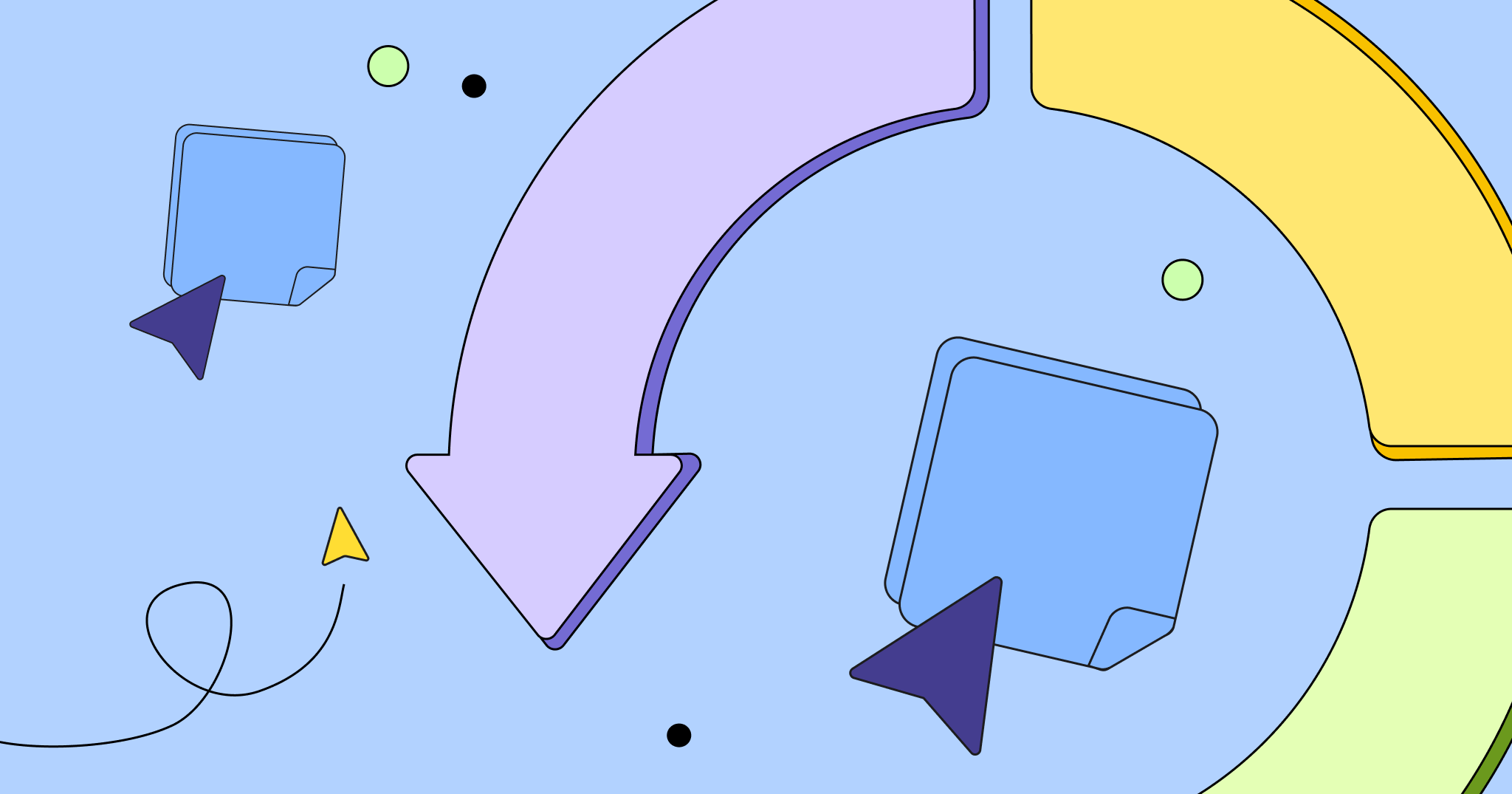Modern consulting firms face many challenges. Hiring top professionals often relies on building distributed teams, and clients can be located anywhere in the world. This often means firms are navigating two sets of challenging priorities: the internal ones with their own team and the external ones with their clients. As founder and CEO of StratMinds and former senior partner at preeminent firms such as Strategy& and PricewaterhouseCoopers, Richard Jhang has extensive experience managing both types of relationships. We sat down with Richard to learn more about how to effectively run a consulting business with a distributed team and transform legacy processes.
Into the world of consulting and entrepreneurship
I started out at a startup tech company, but around 20 years ago, I began my consulting career at a high-tech boutique firm that focused on building a huge technology infrastructure. This led me to positions at Cap Gemini Ernst & Young, PricewaterhouseCoopers (PwC), and Strategy& (formerly Booz & Co).
Often, the scale of my projects would be fairly large, with as much as $100 million budgets. Issues arising at this scale require the mobilization of the smartest and most creative people.
However, the actual practice of how we worked was rather localized. When you have to ship people around the globe to make things happen, there is a limit to how much you can scale. I realized that teams that can leverage the smarts of globally distributed people become the most successful.
As I grew my consulting practices, my teams and I had to face this challenge of distributed work. We learned many important lessons, but the two most critical were: (1) leverage the best of what you have—ideas, people and other resources—wherever they may be; and (2) challenge the established norm.
In the past year, I started my own firm, StratMinds, to help earlier-stage companies. We focus on early-stage investment, startup advisory/strategy consulting and collaboration with other founders to incubate and co-found businesses. StratMinds is much smaller than other global consultancies, but it is designed to operate in a distributed fashion, with people in multiple countries and time zones.
Designing a distributed business
Currently, about half the StratMinds team is distributed. There may be parts of your organization that need to be distributed because you need to access talent that is only available remotely. You cannot afford to have them travel all the time for every major interaction.
We had to design how we work intelligently. Merely replacing a meeting with a conference call hardly does the job. We have to engineer every aspect of our work.
At one of the organizations I previously worked for, we designed its business to fully embrace distributed work. We could target almost 25% in efficiency improvement/cost reduction in the first phase of the design rollout. This was possible because we fully embraced remote work and embedded AI and automation tools as well as dramatically different ways of collaboration. What is possible now with the latest technology is even more impressive.
Key techniques for distributed teams
Outsource and automate
Managing a distributed business poses a greater logistical challenge than managing everything at the same site. You can save time and money by automating workforce scheduling, meeting coordination, meeting minute transcription, market research/analysis, data entry, and preparation of draft narrative reports based on data analytics. Combining automated tasks with outsourced help can improve the efficiency of your business, even as you scale up your distributed team.
Meet face to face
When engaging people across different offices, we strongly favor video conferencing over phone calls. It matters to be able to see eye to eye and read each other’s body language. Consider going beyond just a little video conference camera. When you use telepresence robots and other immersive video conferencing setups, you can take the team interaction to a new level.
Visualize
Visualization is a common language for us all. Because we think, work, and talk in very different styles, a good visualization may be the most effective tool to get everyone on the same page quickly. We are a big fan of digital mind maps and whiteboards, and we often use them in lieu of more formal documents because it saves us time, enhances the fidelity of our communication, and improves our collaboration. A tool like Miro is a godsend for a team distributed across the globe.
If you have an important meeting or workshop, consider engaging a professional graphic artist to do a live visualization of the meeting discussion. It will keep everyone fully engaged, and there will be better meeting notes. This is especially useful when you have multi-stakeholder project meetings. Some of my former clients ended up using these visualizations as posters to remind everyone of issues, decisions, and milestones. This approach was once reserved for more complex workshops and design-thinking sessions, but it is now worth leveraging more broadly.
Lastly, consider making a movie or animation to simplify a complex concept or report. At one of my previous firms, we condensed a 100+ page strategy document into a 5-minute video for a major client. It was one of the rare times when the client told us that the work was perfect. The whole organization got it… despite the fact that only a small fraction of them had read the detailed strategy report.
Use multiple channels
You need to offer people multiple communication channels so they can find what best suits them. Do not feel compelled to standardize. We combine multiple communication channels to maximize the reach and convenience of our interactions and select the optimal channel for each type of communication.
Tools like Miro enable teams to see how people are thinking and capturing their ideas, focusing on the question in a very visual way, no matter where you are. Some may see this as the second-best proxy to spending time together in the same meeting room, but in some ways, a good digital counterpart is even better because the information is captured in good fidelity and outlives the duration of the meeting.
These days, I am actively experimenting with AI and robotics to further enhance how we work. We acquired telepresence robots so a remote attendee can have a higher fidelity of telepresence. We are also considering an early-stage investment in an AI-based telepresence/assistant robot. The next iteration of digitization and new business design thinking will lead to amazing enhancements to our work productivity, especially when working in a distributed environment.
Beyond tools and techniques
I have discussed at length what tools and techniques can be leveraged to make a business run more efficiently across distributed sites. But, it is also important to challenge the norms of our business to take it to the next level.
For example, one of the very common and painful bottlenecks of a consulting business is that the sales process can be very time consuming, resource intensive, and inefficient. Generally, it revolves around identifying and pursuing an opportunity and then creating a proposal to address a formal or informal request for proposal from a client. You may be given two weeks, a month, or even a six-month timeline to respond to it, depending on the scale, risk, and complexity of work to be done. No matter how much time you have, we all usually spend the last 10 to 25% of the remaining time working late hours and weekends, painfully going through different iterations to get it done right and submit the proposal in time. Many consultants associate proposal efforts with massive pain as a result, but it doesn’t need to be that way.
A consulting business consists of…
Practice development
You build a practice with certain expertise based on your target market. Observe market opportunities; come up with ideas, analyze them and develop a relevant and viable approach or solution that you can pitch to clients.
Business development
You find and make your pitch to a client that can benefit from your approach or solution and is willing to pay for it.
Engagement delivery
You enter into a contract with a client and implement your approach or solution.
We decided to fix this painful process and found three primary issues that we had to deal with:
— We had to quickly route an opportunity to the right team. This means going beyond who happens to be available in your office and instead engaging the right people that can move the needle.
— Usually too much time is spent thinking about what to do about an opportunity. More lead time for a proposal merely means more time to procrastinate. Few proposal efforts wrap up early, if ever.
— The proposal development work was often bottlenecked by a small fraction of the overall team, sometimes because too few people held required client knowledge or professional expertise and more generally because the proposal effort was not effectively delegated across a broader team.
To address these issues and mobilize proposal efforts, we came up with the 24-hour process for answering key questions
1. Is this something that we can do? (e.g. any conflicts of interest, legal or regulatory situations, available bandwidth)
2. What positions us competitively? (e.g. past success/reputation in this domain, client relationship, relevant experience, unique expertise, our team of experts, research/data, pre-fabricated solutions)
3. Where have we done this before? (e.g. re-usable sample proposals and approaches, proven teams of experts, relevant research/data and solutions, client references to leverage as part of the new proposal)
4. What is a good approach for delivering the client-requested work: phases, key activities, and deliverables?
5. Who can deliver this work, and how should they be organized?
6. How much time and money would it take to make this happen?
7. What are the key risks, assumptions, and non-negotiable constraints?
8. How should the proposal effort be organized? (e.g. proposal development project plan, assignment of responsibilities/tasks, booking review meetings with key stakeholders and/or clients)
9. Should the pursuit leader be changed to someone better qualified/more available?
Here’s what typically happens when a consulting team follows the 24HP (24-hour process):
— Within the same day of receiving a client request for a proposal, the lead executive assigns a potential engagement manager as a pursuit leader.
— The pursuit leader immediately books a meeting for the next day to review the output from the 24HP with key stakeholders.
— The pursuit leader assembles at least a two-person team to brainstorm and answer the 24HP questions on a whiteboard.
— The pursuit team captures what’s drawn on the whiteboard (digitally or using a phone camera). Any other documentation is optional. A support person may be engaged to compile reusable proposals, project approaches, solutions, research/data, and profiles of consultants to be proposed in parallel.
— At the next day’s 24HP review meeting, the pursuit team takes the review feedback to refine, reorganize, and initiate the proposal development effort.
— The designated pursuit leader books all proposal checkpoint meetings in advance until the proposal submission deadline and gets the ball rolling.
With this new approach, we eventually got to the point where most proposals were completed within days or weeks rather than months. The approach significantly lowered the cost of sales and increased our overall bandwidth for additional business pursuits. We began leveraging this type of approach across many aspects of what we did.
Managing a distributed startup: Practical advice for founders
Here are some more tips for founders with a distributed workforce:
— Recognize early on what needs to be together vs. distributed. Teams or people with high work-related affinity should be kept together geographically if possible. The leadership team should be together. The product management and engineering teams should be together. The speed of iteration and intimate understanding of each other that you get in the same time zone are priceless. For scarce expertise that may limit your ability to scale, however, boldly look around the globe.
— Visualization, adoption of AI and automation, and digital collaboration tools make your work more efficient. These tools can be applicable to any organization operating with knowledge workers and specialists.
— Challenge the established norm of how you build and run different aspects of your business. Otherwise, even the greatest business ideas may get suffocated by archaic and nonsensical practices.
— Pay close attention to your customers’ and staff’s pain points. Some amazing opportunities to invent a great business lie therein.
—
Profile:
Richard Jhang is the founder/CEO of StratMinds, a firm established to help innovative founders through advisory services, execution support and early-stage investment. Before StratMinds, Richard was the Chief Innovation Officer and global partner/VP of digital strategy at IBM Global Business Services. Richard has an extensive technology and strategy consulting background and held senior roles at Strategy& (formerly Booz & Co.), PwC, Capgemini Ernst & Young. Follow Richard on LinkedIn and Twitter.




